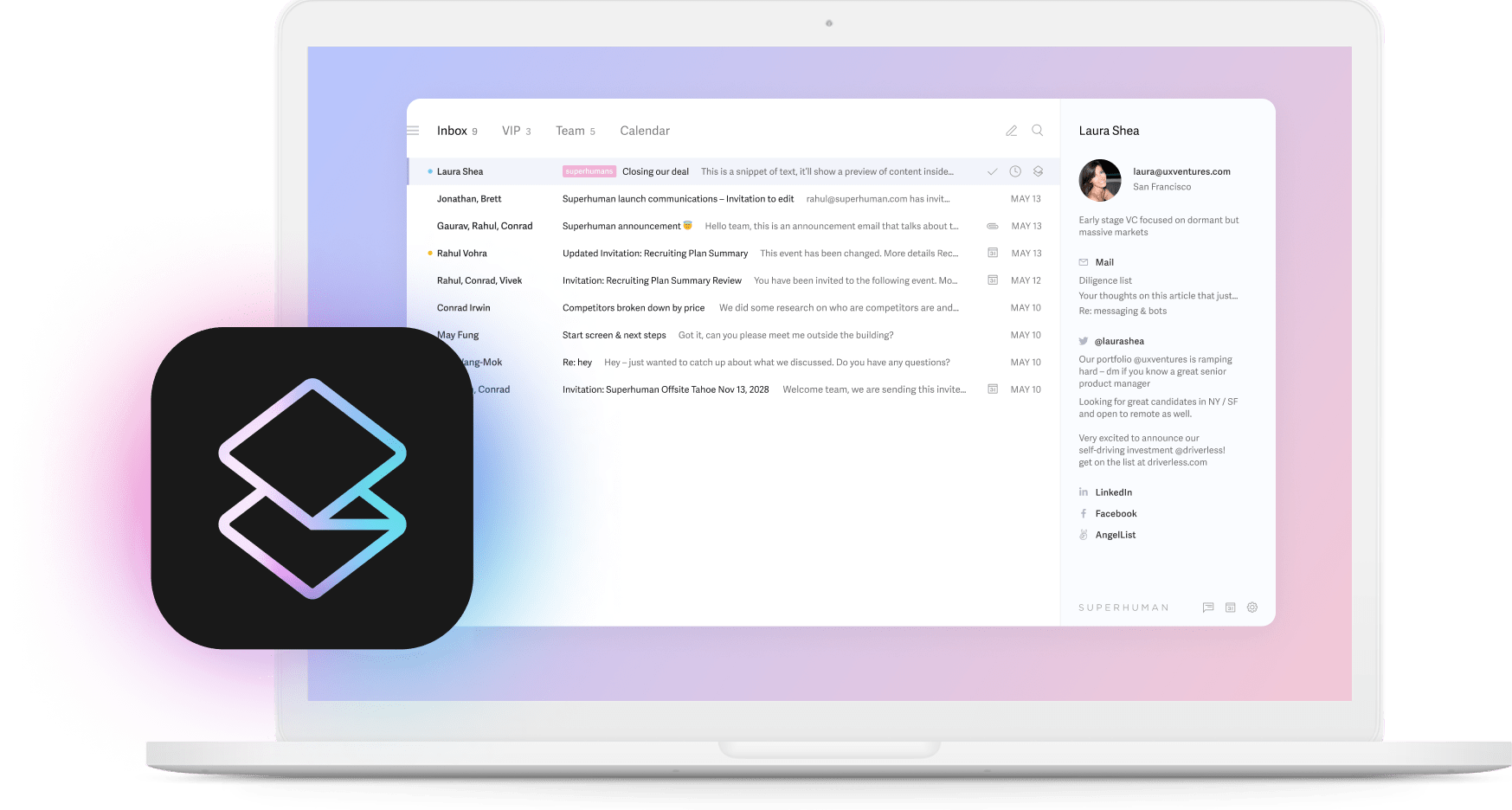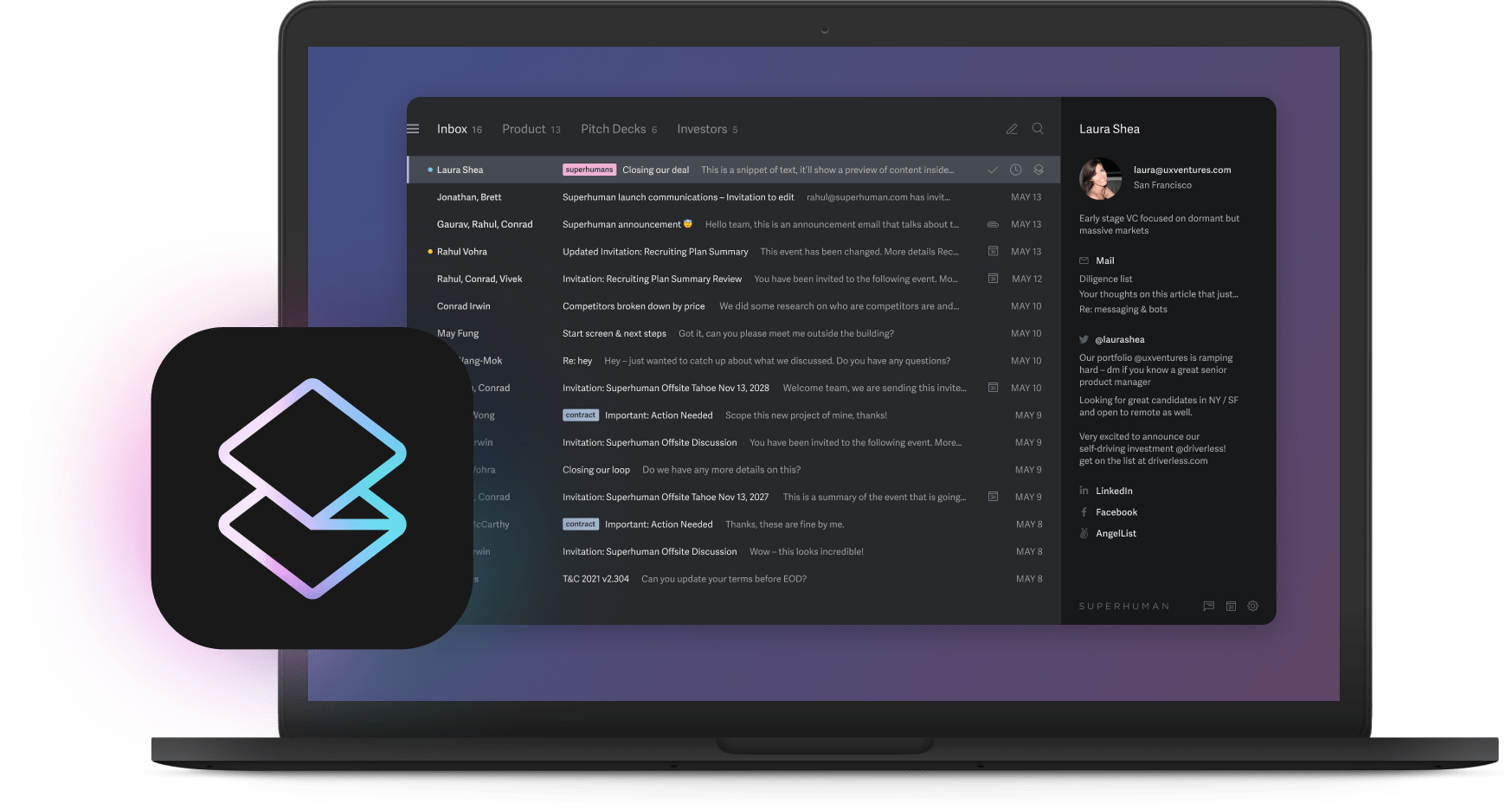
Most executives write emails like they're addressing the Supreme Court. Then they wonder why nobody responds. The average leader spends 28 hours per week on email but lacks frameworks for communication that gets results.
Here's what happens when leaders write from scratch every time. Inconsistent messaging confuses teams. Important decisions get buried in paragraphs. Board members skim and miss key points. Partners ignore proposals that sound like legal briefs.
You need executive email examples that work. Six proven templates cover every high-stakes scenario you face as a leader. Each one transforms time-wasting back-and-forth into clear, action-driving communication.
These templates solve the real problem. Most business emails fail because they sound nothing like how smart people talk to each other. Fix that, and everything else falls into place.
Essential principles for high-impact executive emails
Good executive emails follow six simple rules. Skip any step and your message gets ignored or misunderstood.
Lead with subject lines that matter Your subject line determines whether people read or delete. Write subjects like headlines. Be specific about what you need. Split Inbox automatically sorts messages by importance, so your critical communications from board members and key stakeholders get immediate attention.
Open by saying exactly what you want The first sentence should answer why this email exists. No warm-up paragraphs. No context setting. Just tell people what you need them to know or do.
Write so people can scan Busy leaders scan before reading. Use bullets instead of paragraphs. Put the most important information first. AI-native writing assistance helps structure complex updates into sections people can digest quickly.
Make action items impossible to miss Vague requests create delays. Every email should contain specific next steps with clear owners. Use tables or numbered lists for tasks that need tracking.
Set deadlines that stick Timeline clarity prevents bottlenecks. Tell people exactly when you need responses or deliverables. No "when you get a chance" or "at your earliest convenience."
Keep signatures simple Consistent signature blocks with essential contact information maintain professionalism without clutter. Skip the inspirational quotes and legal disclaimers.
This framework works because busy people appreciate clarity over cleverness. Teams implementing these principles report faster decision-making and clearer alignment across departments. Etiquette tips and formatting advice provide additional foundation for executive communications.
Superhuman amplifies this framework through features designed for leadership workflows. Split Inbox supports subject line prioritization, AI Drafting assists with scannable structure, and Snippets scale consistent messaging across teams.
The 6 essential executive email templates
1. Board update email
Board members receive dozens of updates monthly. Most read like annual reports written by committees. Yours should read like a conversation with someone who respects their time.
Template structure:
- Subject line formula: "Q[X] Board Update – [Key Headline]"
- Opening: One sentence summarizing the quarter's biggest win or challenge
- Body sections: Performance highlights with specific numbers, current challenges with solutions in progress, strategic decisions needing board input
- Closing: Clear request for meeting preparation or specific feedback
Board directors prefer bullet points for key information rather than dense paragraphs. They want to understand performance quickly and identify where their expertise helps most.
Template example:
Subject: Q3 Board Update – Revenue up 47% with Series B prep underway
Q3 delivered our strongest growth quarter yet, with revenue increasing 47% while maintaining healthy unit economics.
Key highlights:
- ARR reached $2.1M (+47% QoQ)
- Customer acquisition cost decreased 23%
- Product launch exceeded projections by 180%
Current challenges & solutions in progress:
- Talent acquisition delays in engineering (partnering with specialized recruiting firm)
- Supply chain constraints affecting Q4 delivery (secured backup vendors)
Board decisions needed:
- Series B timeline approval
- International expansion budget allocation
Please review attached financial deck before Monday's meeting. Looking forward to discussing expansion strategy.Send Later enables strategic timing before board meetings. Split Inbox prioritizes board member responses for immediate attention.
Try Superhuman Mail2. Stakeholder progress email
Getting everyone aligned on project status feels impossible until you use the same format every time. This template eliminates confusion about what's done, what's blocked, and who needs to act.
Template structure:
- Subject: "[Project Name] Progress Update – [Status]"
- Opening: Project objective reminder to maintain context
- Progress made: Bullet-point achievements with specific metrics
- Current blockers: Issues identified with assigned owners for resolution
- Decisions required: Specific asks with clear deadlines
Business email research shows that stakeholder communication succeeds through consistent structure and clear accountability. Professional examples provide additional variations for different stakeholder scenarios.
Template example:
Subject: Customer Portal Project Progress Update – On track for Q1 launch
Our Q1 customer portal launch remains on schedule to deliver self-service capabilities that reduce support tickets by 40%.
Progress made this week:
- User authentication system completed and tested
- Dashboard wireframes approved by design team
- API integration with billing system at 85% completion
Current blockers requiring attention:
- Legal review of data privacy controls (owner: Sarah Kim, needed by Friday)
- Final security audit scheduling conflict (owner: Dev team, escalating to CTO)
Decisions needed from stakeholders:
- Approve beta customer list for early testing (deadline: Monday)
- Sign off on go-to-market timeline (deadline: Wednesday)
Next update scheduled for Friday. Please confirm your availability for Tuesday's review session.Snippets enable weekly template reuse across multiple stakeholders. Shared Conversations facilitate internal team alignment before sending stakeholder updates.
3. Company-wide announcement email
Company announcements usually sound like press releases written by lawyers. People skip them or misunderstand the implications. Write announcements like you're telling a friend about important news.
Template structure:
- Subject: Bold, clear announcement with essential information
- Opening: Single sentence explaining the core change
- Context: Why this matters to the organization and individual teams
- Details: Specific information organized in digestible bullets
- Next actions: Clear steps and available resources
Effective announcements answer who, what, when, where, and why in the opening sentence. Business situation templates show that announcement variations succeed through clarity over corporate speak.
Template example:
Subject: New Product Launch – Introducing Enterprise Dashboard, available January 15
We're launching Enterprise Dashboard on January 15, providing Fortune 500 clients with advanced analytics capabilities that position us directly against Salesforce and HubSpot.
Why this matters:
Enterprise Dashboard represents our entry into the $12B business intelligence market, with early customer feedback indicating 200% increase in user engagement and 60% reduction in churn.
What's included:
- Real-time data visualization for C-suite reporting
- Custom integration with existing CRM systems
- Dedicated customer success manager for Fortune 500 accounts
- Advanced security protocols meeting SOC 2 compliance
Your role in the launch:
- Sales team: New demo scripts available in shared drive
- Customer Success: Training sessions scheduled for January 10-12
- Marketing: Social media toolkit ready for January 15 announcement
Questions about Enterprise Dashboard? Join the all-hands meeting Friday at 2 PM or review the FAQ document in Notion.Send Later optimizes timing across global teams. Snippets ensure consistent messaging across department follow-ups.
4. Meeting follow-up with action items email
Most meeting follow-ups disappear into inboxes and nothing gets done. This template prevents decisions from dissolving into confusion. Clear ownership and deadlines turn discussions into results.
Template structure:
- Subject: "[Meeting Topic] – Action Items & Next Steps"
- Opening: Meeting purpose and attendee acknowledgment
- Decisions made: Key conclusions reached during discussion
- Action items: Table format with task, owner, and deadline
- Next steps: Follow-up schedule and accountability measures
Research shows that specific action steps increase follow-through rates significantly. People need clarity about what they committed to and when deliverables are due.
Template example:
Subject: Product Roadmap Meeting – Action Items & Next Steps
Thank you to all attendees for the productive product roadmap discussion covering Q1 priorities and resource allocation.
Key decisions made:
- Mobile app development takes priority over web platform enhancements
- Customer feedback integration feature moves to Q2
- Design system standardization approved for Q1 completion
Action items:
| Task | Owner | Deadline |
|------|-------|----------|
| Finalize mobile app technical specifications | Alex Chen | January 20 |
| Conduct user research for feedback integration | Maria Rodriguez | January 25 |
| Create design system implementation timeline | Jordan Park | January 18 |
| Budget approval for additional developer | Taylor Kim | January 22 |
Next steps:
Weekly check-ins scheduled for Fridays at 3 PM. Final roadmap presentation to leadership team on February 1.
Please confirm your action items by replying to this email. Follow-up reminders will be sent 48 hours before each deadline.Reminders enable follow-up on action item deadlines. Instant Reply facilitates quick confirmations from task owners. Auto Summarize helps condense long meeting conversations into clear recaps.
5. Investor update email
Most investor updates read like quarterly reports. Investors want to understand your progress and know how they can help. Skip the corporate language and write like you're updating a smart friend who invested in your company.
Template structure:
- Subject: "[Company] Investor Update – [Month/Quarter]"
- One-sentence overview: Current state and trajectory
- Key metrics: Month-over-month growth, runway, performance indicators
- Notable wins: Significant achievements and milestones reached
- Specific asks: Clear requests for investor assistance or introductions
Effective investor updates keep content concise while highlighting action items that utilize investor networks and expertise.
Template example:
Subject: TechFlow Investor Update – December 2024
TechFlow achieved record quarterly growth while extending runway to 18 months through improved unit economics and strategic partnerships.
Key metrics:
- Monthly recurring revenue: $180K (+22% MoM)
- Customer acquisition cost: $120 (-15% MoM)
- Annual run rate: $2.16M
- Cash runway: 18 months
- Team size: 23 people (+3 this quarter)
Notable wins:
- Signed strategic partnership with Microsoft worth $500K ARR
- Product launch generated 1,200 qualified leads in first month
- Customer net promoter score increased to 68 (+12 points)
- Engineering team achieved 99.8% uptime across all systems
Specific asks:
- Introduction to VP of Sales at Stripe (scaling go-to-market)
- Connection with Series A leads focused on B2B SaaS
- Referrals for senior backend engineers in SF Bay Area
Next investor update scheduled for January 31. Thank you for your continued support as we scale toward Series A.Split Inbox prioritizes investor responses. Social Insights personalizes asks based on investor backgrounds. Read Statuses optimize follow-up timing for maximum engagement.
6. Partnership proposal email
Most partnership emails sound like form letters sent to hundreds of companies. Write proposals that show you understand their business and can articulate mutual value clearly.
Template structure:
- Subject: "Partnership Opportunity: [Your Company] ↔ [Their Company]"
- Opening: Mutual benefit statement establishing shared value proposition
- Collaboration overview: Specific partnership framework and structure
- Value proposition: Clear benefits for partner with supporting evidence
- Next step: Specific meeting request with calendar scheduling link
Partnership communication succeeds when it emphasizes reciprocal value rather than one-sided requests. Focus on what you can do for them, not what they can do for you.
Template example:
Subject: Partnership Opportunity: DataFlow ↔ CloudTech
DataFlow and CloudTech serve complementary customer bases in the enterprise software space, creating an opportunity for strategic partnership that could generate $2M additional ARR for both companies.
Collaboration overview:
Our customer data analytics platform integrates seamlessly with CloudTech's infrastructure solutions, providing enterprise clients with end-to-end data management capabilities they're actively requesting.
Value for CloudTech:
- Access to 200+ enterprise customers seeking integrated analytics
- Additional $50K average deal size through bundled offerings
- Differentiation against AWS and Google Cloud in data analytics
- Joint go-to-market opportunities with Fortune 500 prospects
Proposed partnership structure:
- Technical integration between DataFlow Analytics and CloudTech Infrastructure
- Joint sales presentations for enterprise prospects
- Revenue sharing model: 70/30 split based on originating lead source
- Co-marketing initiatives including webinars and conference presence
Next step:
Schedule 30-minute partnership discussion to explore integration possibilities and partnership terms. My calendar link: [calendly.com/partnership-discussion]
Looking forward to exploring how DataFlow and CloudTech can accelerate growth together.Read Status provides optimal follow-up timing. Social Insights enables outreach personalization with relevant details. Send Later ensures partnership emails reach prospects during their optimal business hours.
Start writing emails people want to read
These six templates handle every critical executive communication scenario. Pick the one you need most and adapt the language for your company culture.
Most business emails fail because they sound like legal documents when they should sound like conversations between smart people. Write like you talk and your response rates will improve immediately.
Superhuman transforms these templates from static documents into dynamic communication tools. The AI-native email experience learns your writing patterns over time, suggesting improvements that maintain your voice while ensuring clarity. Teams save 4 hours per person every week through automated prioritization, faster composition, and streamlined workflows.
Your emails as a leader shape how your company operates. With proven templates and AI tools designed for leadership workflows, email becomes what it should have been all along.






